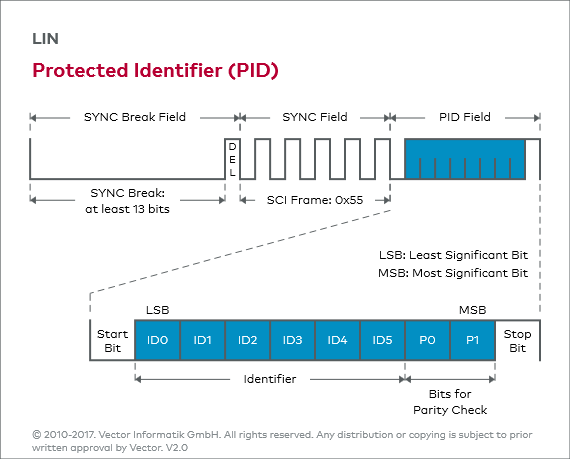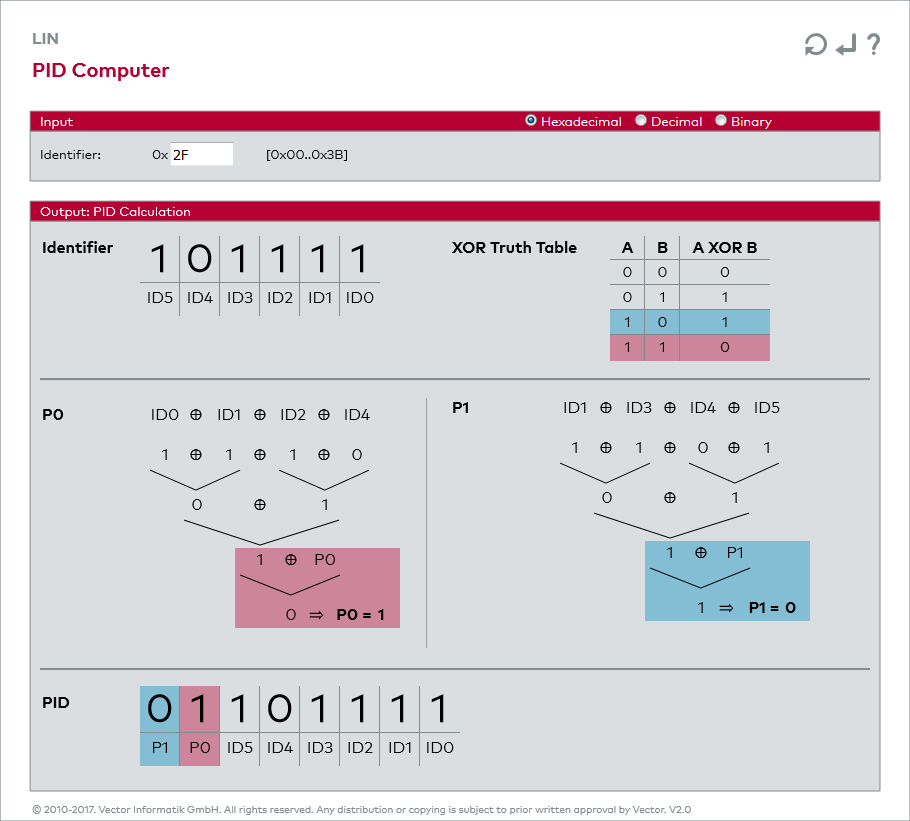Protected Identifier
Identifier (ID)
An identifier is used to assign a unique code to a message. This makes it possible to establish communication relationships. Since the master always sends the header on the bus, the slaves can determine, based on the identifier, whether they need to send out a response.
ID Range
An identifier consists of six bits; therefore, 64 values are available (see figure: Protected Identifier). Four identifiers are used for predefined applications (see figure: Reserved Identifiers).
Protected Identifier (PID)
An identifier is protected by two parity bits. This combination is referred to as the PID. The computation of parity bits P0 and P1 is based on exclusive OR logic, where the parity bit P0 represents even parity and parity bit P1 represents odd parity (see figure: PID Computer).
Residual Error Probability
The quality of this protection is not very high compared to other data protection mechanisms. Given a bit error rate of 10-3, for example, the residual error probability is about 10-5 for this protection method. This means that every hundredth bit error will remain undetected.



